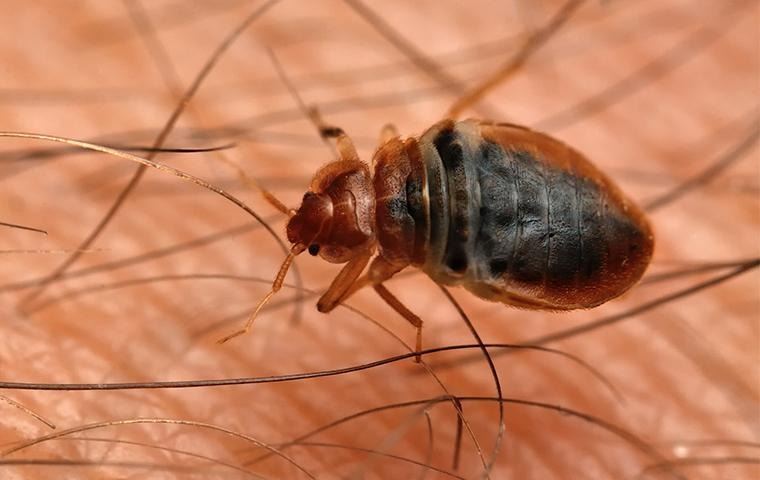
The Key To Completely Getting Rid Of Bed Bugs In Your Mooresville Home
Bed bugs are somewhat unique among pests. Most pest problems begin on the exterior of your home, which is not the case with bed bugs. They don't live in your yard, landscaping, or other places near your exterior. These bugs hitch rides into homes. So, when considering how to completely get rid of bed bugs, we must first look at how these bugs get into your home in this unique way. If you don't, bed bugs may continue to get into your home even as you attempt to get rid of them. Before we look at how they get in, we must look at the most important aspect of pest control: detection. Understanding the warning signs and locating areas of infestation helps at every stage of treatment. Initially, detection helps to target your efforts and deal with bed bugs where they're hiding. During the treatments, detection lets you know your treatment plan is working. Once the treatment plan is concluded, detection ensures no bed bugs remain in your home. In a nutshell, we'll look at how to interpret bed bug bites, other evidence of a bed bug infestation, how bed bugs get in, and how to get rid of them.
If you have an infestation and you need immediate assistance, connect with us through our contact page for bed bug pest control in Mooresville.

Bed Bug Bites Are Often The First Sign Of A Problem
When you wake up with bug bites, does it mean you have bed bugs? Not necessarily. Many bugs can bite you while you sleep, and outdoor bug bites can take hours to swell and become itchy. You might have outdoor bug bites. Do you see the problem? The first step is to interpret the bites and unravel the mystery.
- Bed bug bites are numerous. Each bug typically bites three times.
- Bed bug bites are usually found on skin that is exposed at night.
- Bed bug bites vary from slight bumps to uncomfortable welts.
- There is typically an extensive rash associated with bed bug bites.
- Bed bug bites sometimes look like a rash you would get from an allergic reaction to fabrics or food.
- You can start to notice bites long after you wake up.
When bed bugs get into your home, they're going to bite you. They eat blood. Keep watch for these bites.
The Symptoms Of A Bed Bug Infestation
Bites are a helpful way to tell for certain that you have a bed bug infestation, but you need other bed bug signs if you hope to zero in on where bed bugs are hiding in your home. The signs you need to look for are the following:
- Bed bugs. You know you have an infestation if you see a bed bug in your home, but it is difficult to find bed bugs. We'll help you by telling you where bed bugs hide and how to identify bed bugs when you find them.
- Feces. Bed bugs leave their black feces in many places. We'll look at where they leave them and some of the ways you may mistake feces for something else.
- Blood stains. Bed bugs excrete blood after a blood meal. We'll discuss these stains and why they're sometimes not recognized as blood stains.
- Shed skins. Bed bugs shed their skins several times as they develop. We'll look at how to tell these skins from the skins of other insects, such as cockroaches.
- White eggs. A bed bug egg is 1mm long, and bed bugs tend to lay their eggs in places that are hard to inspect. We'll tell you where to look, what to look for, and what tools to use.
Do you see how complicated it is to locate and interpret the signs of a bed bug infestation? Let's look at each piece of evidence and break down what you need to know most.
Bed Bugs: You've probably seen a bed bug on television or the internet. They are seed-shaped and have six legs and two antennae. They are a rusty color and have horizontal crease lines on the abdomen. But bed bugs don't always look like this. An adult bed bug that has had a recent blood meal may look bloated and redder. Once the blood meal is digested, the bug may look black due to the visibility of the feces inside its body. In some lighting conditions, you might think bed bugs are black insects, not reddish or rusty. Along with this, you might not see an adult bed bug, but a baby bed bug. Newly hatched nymphs are pale-colored and may have a bright red abdomen after taking a blood meal. As bed bugs grow, they become tan as they develop into adults. You're looking for bugs that are 1mm to 4.5mms and white, red, or black coloration. Look for them in tight spaces, such as the seams of mattresses and box springs, under labels, between the mattress and box spring, in the cracks of your bed frame, and hidden in furniture around your bed. Check living room furniture and computer chairs as well. Look in pockets, seams, creases, cracks, and recesses.
Feces: The feces of a bed bug are black. You'll find them on pillowcases, sheets, bedspreads, and surfaces. When found on fabrics, bed bug feces may look like black spots. On wood, they'll look like specks or streaks. If you find them on a mattress or box spring, they can look like rub marks—the kind you get when you rub against a dirty surface as you bring these items into your home. They look this way because bed bugs live in these items and leave lots of black feces that soak through.
Blood Stains: The blood stains left by bed bugs are often mixed with feces, which alters the coloration. When you find blood stains separate from feces, they may look like urine stains because blood stains become tan or brown over time.
Shed Skins: Bed bugs shed their skins as they develop, so they aren't brownish-red. They are white or tan. They're also small because bed bugs are small. You'll need a tool when searching for this material in seams, stitching, cracks, and crevices. You can use a debit card or butter knife to bring this material to the surface.
Bed Bug Eggs: You'll find bed bugs eggs the same way you find shed skins. Use a debit card or butter knife to bring them to the surface. You can also find eggs in compressed areas, such as between your mattress and box spring, under couch cushions, and in pockets. Also, check luggage and bags in your home.
Now that you know what to look for, let's discuss how bed bugs get into Moorseville homes and how to treat bed bugs.
All The Ways Bed Bugs Sneak Their Way Into Our Homes
There are many ways bed bugs can hitch a ride into your home. You can bring them home. Your kids can bring them home. A friend, relative, or guest can bring them into your home. As you work to get rid of bed bugs, it is best to limit visits. Doing this will help to prevent bed bugs from spreading.
Where do bed bugs come from? Here are a few common ways people pick bed bugs up:
- You can get them when you go on vacation and stay somewhere, even in a 5-star hotel.
- You can get them from work or school, even during the day.
- You can pick bed bugs up when visiting family in a senior living center. Seniors typically have a slighter reaction to bed bug bites so these insects can go undetected.
- You can get them from taxis, buses, trains, planes, and other forms of public transportation.
- Your kids can pick bed bugs up at a sleepover.
- Bed bugs can come from a neighboring apartment or living unit. They get into wall voids to move between rooms.
- You can get bed bugs when you buy used furniture.
Bed bugs don't come in from your yard. You need to consider who may have brought them in and where they may have picked them up.
The Best Way To Completely Get Rid Of Bed Bugs
Once you determine you have a bed bug infestation, locate where the bugs are hiding, and evaluate how you may have gotten them, you can take steps to get rid of them. The best and most effective way is to contact local pest control for bed bugs. If you'd prefer to try and control them yourself, here are a few suggestions:
- Wash and dry all your bedding.
- Put infested items that are dryer-safe through a 30-minute dryer cycle.
- Put infested items in a freezer bag and store them in your freezer for four days if it isn't safe to put them in your dryer.
- Bring certain infested items outside, such as luggage, and use soapy water to treat them. Soap acts as a desiccant.
- Routinely vacuum all your rugs.
- Apply encasements to your mattresses and box springs.
All of these work to naturally address bed bugs. When control products are needed, it is best to have a licensed professional apply them.
Are you in Mooresville? Let the service team at Lake Norman Home Services help you resolve your bed bug infestation and guide you in preventing future infestations. We can help.


Customer Reviews
-
“Lake Norman pest control does a wonderful job all around and even explained the safety concerns I had of the products for my new baby and dog.”- Lauren G.
-
“Lake Norman Pest Control has always been consistent with their service quality and more than fair with pricing.”- Michael C.
-
“He called me after the appointment and gave me a summary of the service and he made some additional recommendations.”- Leslie Z.
-
Jake promptly arrived and asked what issues we were having and quickly began applying treatment. He was professional and thorough. Very pleased with the service today.- Lisa C.
-
“Jake promptly arrived and asked what issues we were having and quickly began applying treatment.”- Lisa C.
-
“Lake Norman always does a great job in communicating and shows up at their committed times.”- Mike C.
-
“Michael has beHe and every representative we’ve worked with from this company have been very kind and good at listening to our needs. en super helpful! He's prompt, thorough, and responsive to all of our questions.”- Kimberly G.
-
“Our technician, Jake, has been very helpful. He has been on time and responsive to all my questions.”- Laurence P.


Why Choose Lake Norman Home Services?
-
Give A CrapDelight others by owning your role and saying yes. Take pride in how you appear & act & every other detail of the job. Be on time, attentive, & enthusiastic. Act as if the buck stops with you on every aspect of the job.
-
Chase PerfectionChase Perfection, knowing full well we will not reach it, but along the way we will catch excellence. Have a sense of urgency; Go-Forth Time - right now might be the only time you have to get it right.
-
Dig Deeper
Be an action-oriented professional that makes decisions based on evidence rather than stories & assumptions. Stay curious. Data can speak for itself.
Understand the cause of the fire rather than rushing to extinguish it.
-
Fight For SimplicityKeep it simple & consistent. Focus on how things should be done every time.
-
Face It, Fix ItConfront challenges directly and address issues head-on. A bias for action and powerful conversations drive our progress. It’s about getting it right rather than being right.
-
Grow!Growth is our purpose. Growing as people & growing our business.